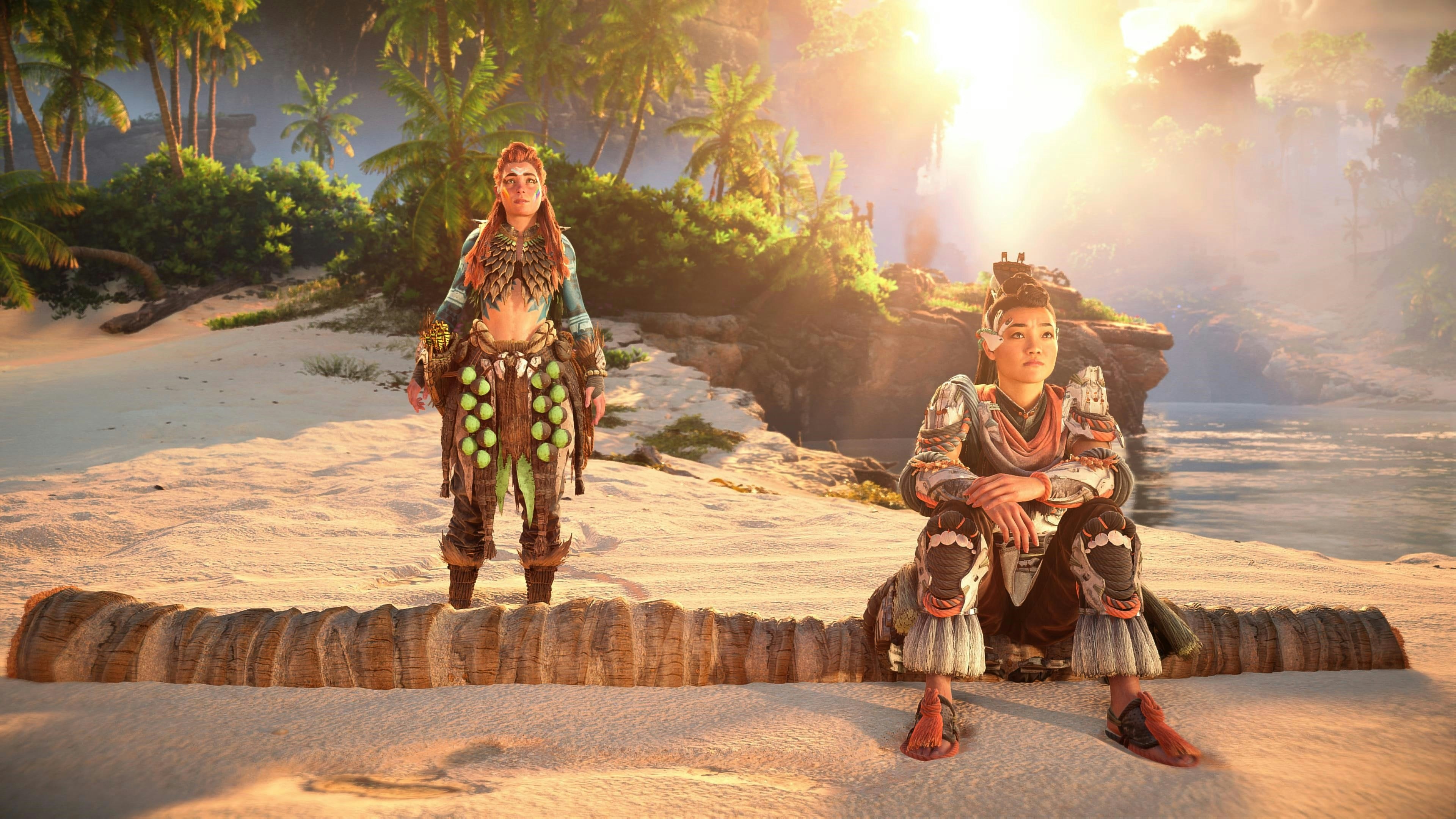
Watching Aloy get tossed between two Ravagers like a beach ball, I’m realizing I might be a bit rusty.
Even with my overshield equipped, these Apex variants are far more aggressive than the machines I’m used to tackling with ease in Horizon Forbidden West. Once I managed to get free, I remembered I’ve got some new skills. Applying plasma to Aloy’s spear, I’m able to build up a charge that inflicts heavy damage on one of the Ravagers when it detonates. As the monstrous machine tumbles, I zip over with my grappling hook and land the perfect coup de grâce.
Arriving a little over a year after the base game first launched, Burning Shores is a $20 expansion for Horizon Forbidden West that directly continues the story. Despite the cross-generation approach developer Guerrilla Games took for the main game, Burning Shores is exclusive to the PS5. While it provides some neat moments that likely wouldn’t be possible otherwise, it still doesn’t feel like we’ve hit the full potential of what these talented developers can do with Sony’s new-gen hardware.
Shedding Some Light
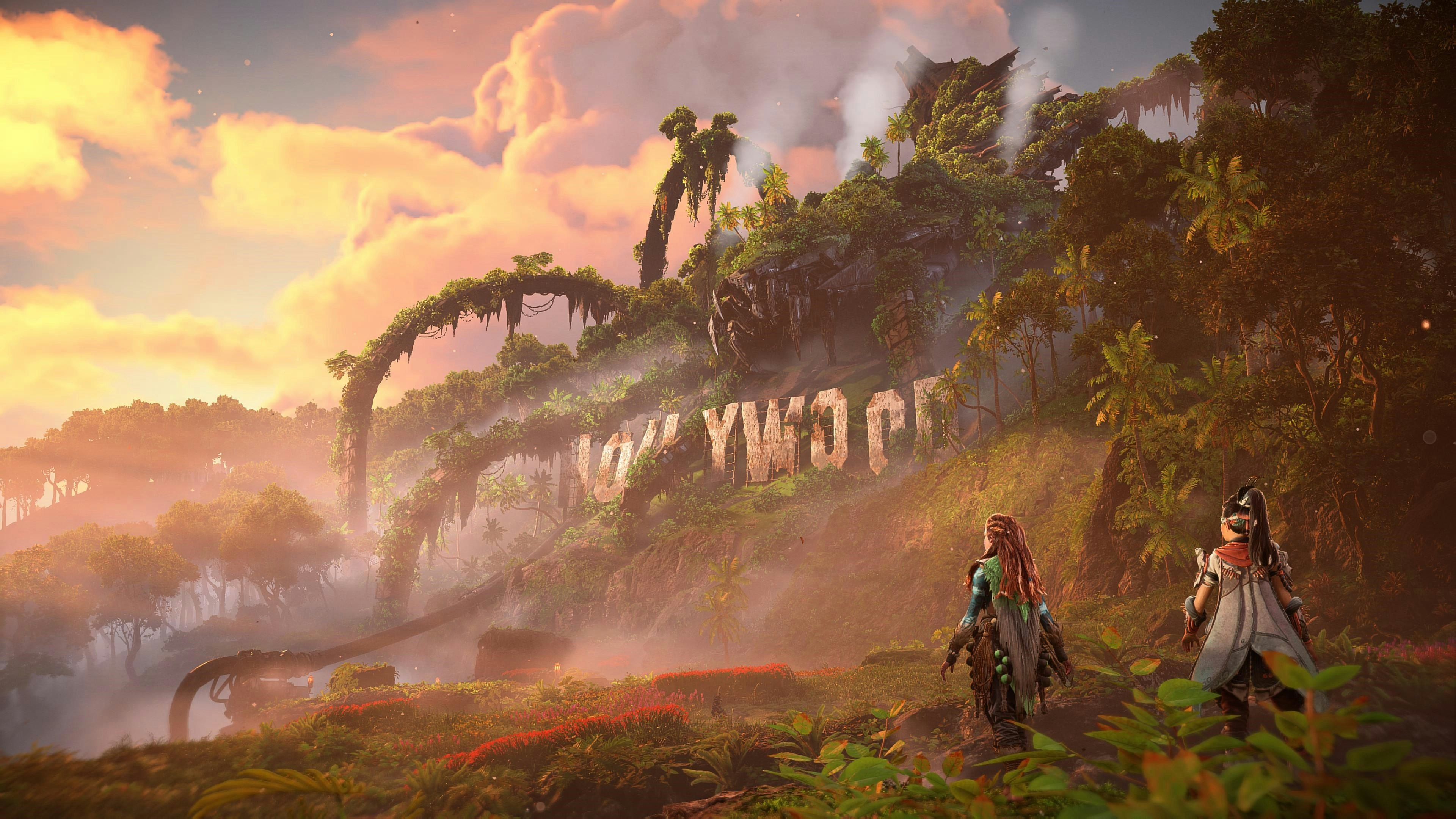
Burning Shores is set mere moments after the end of Horizon Forbidden West, with Aloy getting a call from the ever-elusive Sylens. There’s something important happening in the area formerly known as Los Angeles, now an archipelago inhabited by man and machine alike. It’s a compelling quest, one that raises the stakes and sheds a bit more light on the encroaching threat of Nemesis.
Central to this story is how Aloy crosses paths with Seyka, a member of the Quen in the Burning Shores. Seyka (performed by actress Kylie Liya Page), provides a neat foil to Aloy, someone also keen on proving herself and eager to learn about the world, but not quite up to speed on the state of things.
Whether it’s making their way through an old movie set or discussing how dangerous something is, the way the two interact provides a big leap forward for Aloy’s character development, building on how isolated she has previously found herself and the sense of kinship that was central to the main game. I’m eager to see just how things evolve in the future, and how exactly the developers build on providing possible options in addition to what’s been unlocked here.
Outside of that core piece of the narrative, things here are mostly “fine.” There are some neat hints of what’s coming in the future, but players shouldn’t expect any twists and turns approaching the level of the first two games.
No walk in the park
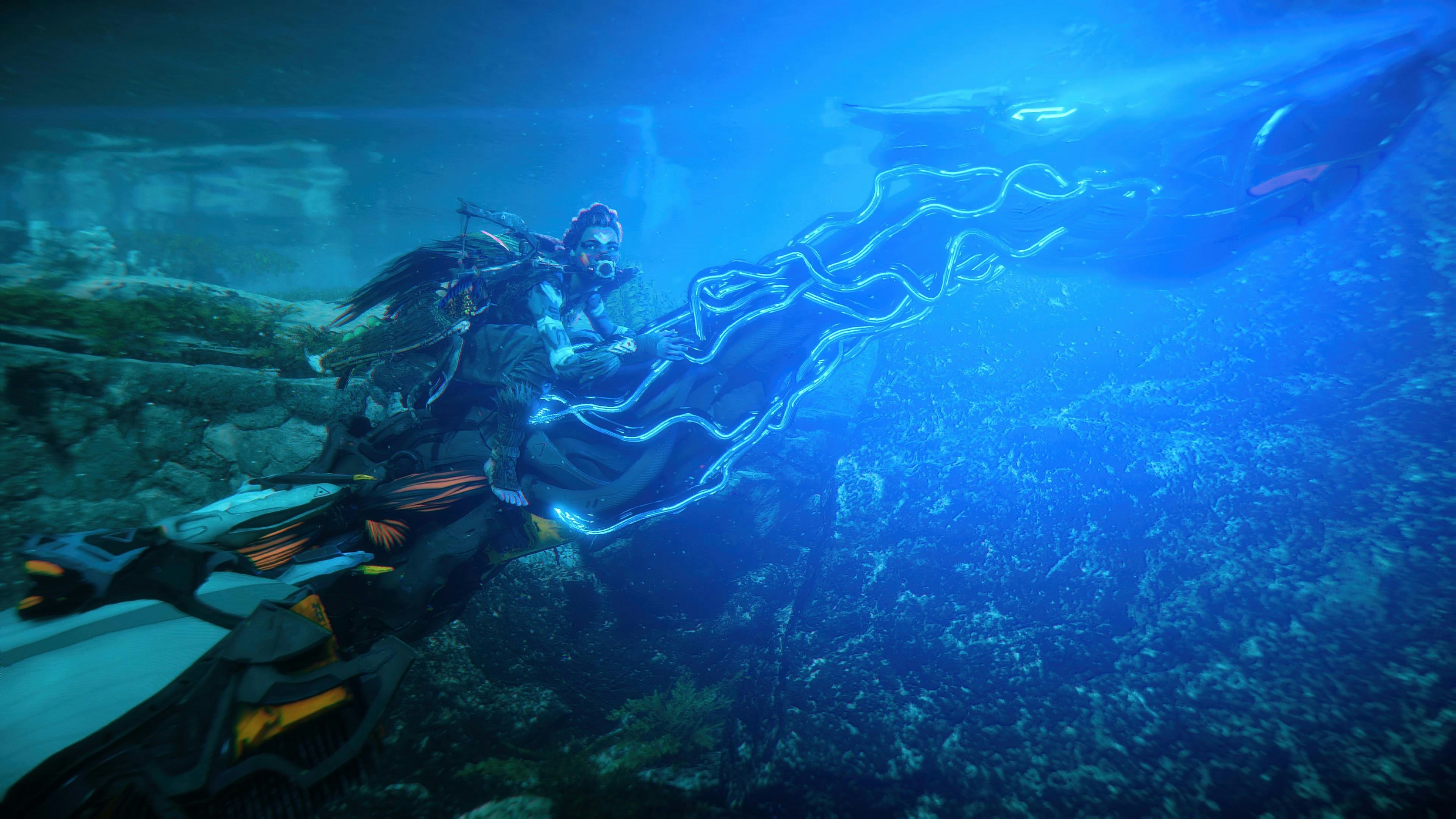
While the gameplay of Burning Shores is mostly familiar, a couple of nifty tricks provide a bit of spice. New skills have been added and the level cap has been raised to 60, allowing Aloy to take a bit more damage and pull off some cool new moves. One skill allows you to zip over instantly to a downed machine using your grappling hook, while another enables you to enhance your spear’s elemental damage.
You’ll need all of this to survive, because this expansion is hard. The aggressive nature of the new and returning machines means that even with high-quality gear, you’re going to struggle if you don’t use every single ability at your disposal. It’s fun when it works, but it does feel a bit over the top at times, and I’d encourage anyone that gets frustrated to tune the difficulty down a little bit.
There’s also a bit of new fun in the Waterwing, one of the new machines that’s capable of going underwater with Aloy on its back. It’s a new method of traversal and feels great, giving underwater exploration a much-needed boost. Combined with a new way of fighting Snapmaws underwater — it’s admittedly a bit situationally limited — and it’s clear the developers are finding new ways to make this aspect of exploration much more compelling. On top of all that, Aloy even gets a skiff that can be used to navigate the archipelago, meaning there’s a wide range of options for choosing how to get around the water now.
The same cannot be said for exploring the air. While you’ll be spending a large amount of time in the sky, things are basically the exact same, despite the fact that DLC was built around using the PS5. Things still feel sluggish when riding a Sunwing or Waterwing in the air, something that I’d hope wouldn’t really be the case now that the game’s design isn’t being held back by the PS4.
Dripping in immersion
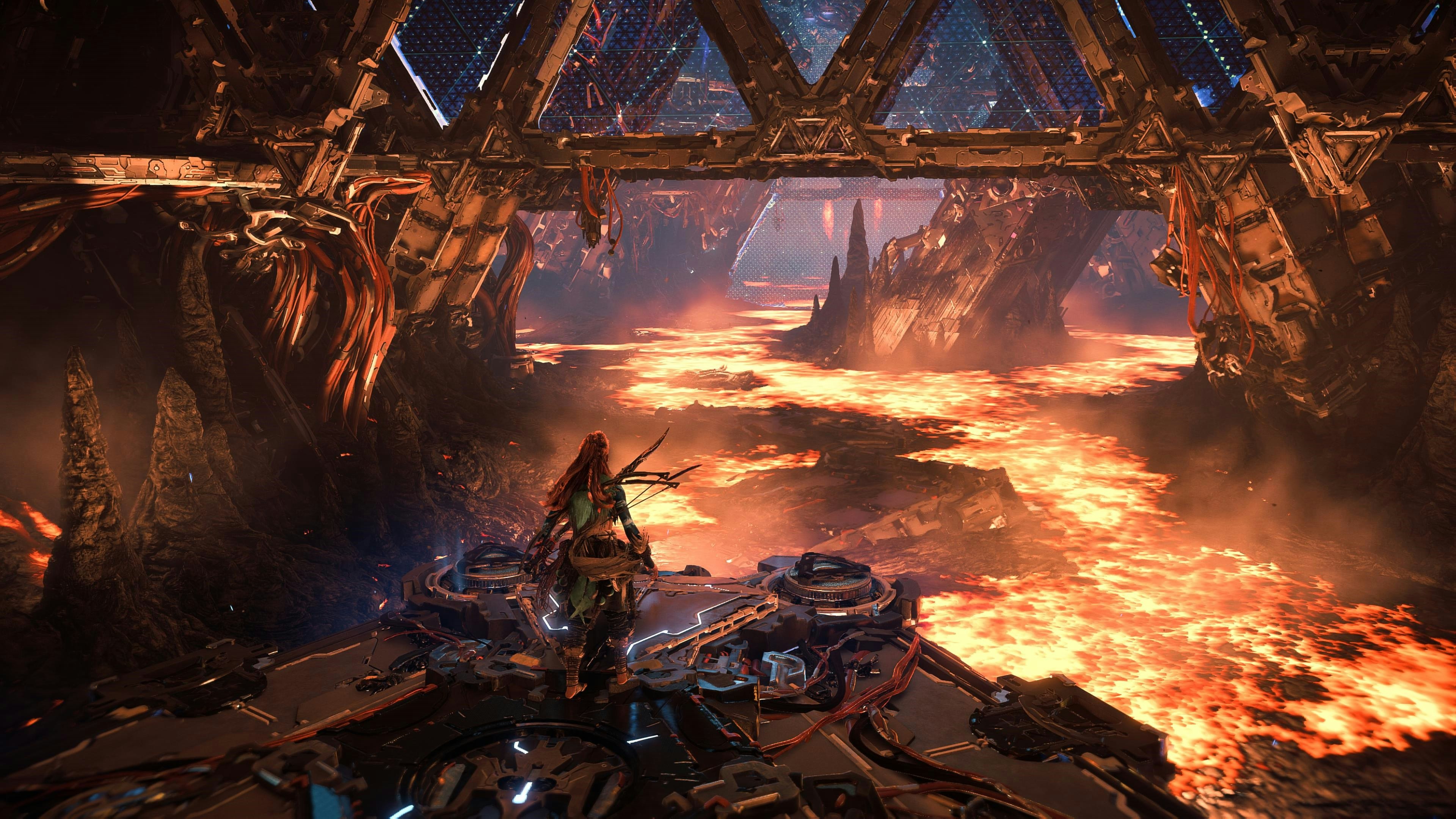
Horizon Forbidden West was already a gorgeous game, and the art direction of Burning Shores only reemphasizes that. From the lava flows to ruined cities, it never stops looking and sounding great. The coastal sections of the main game already provided some of its most impressive vistas, and doubling down on that setting with this expansion was clearly the right call.
The music is likewise solid, and while it seems at times a bit subdued compared to the more sweeping tracks done by its army of composers in the base game — Joris de Man, The Flight, Oleksa Lozowchuk and Niels van der Leest all contributed — it oddly works, selling the quieter moments of Aloy and Seyka’s struggle.
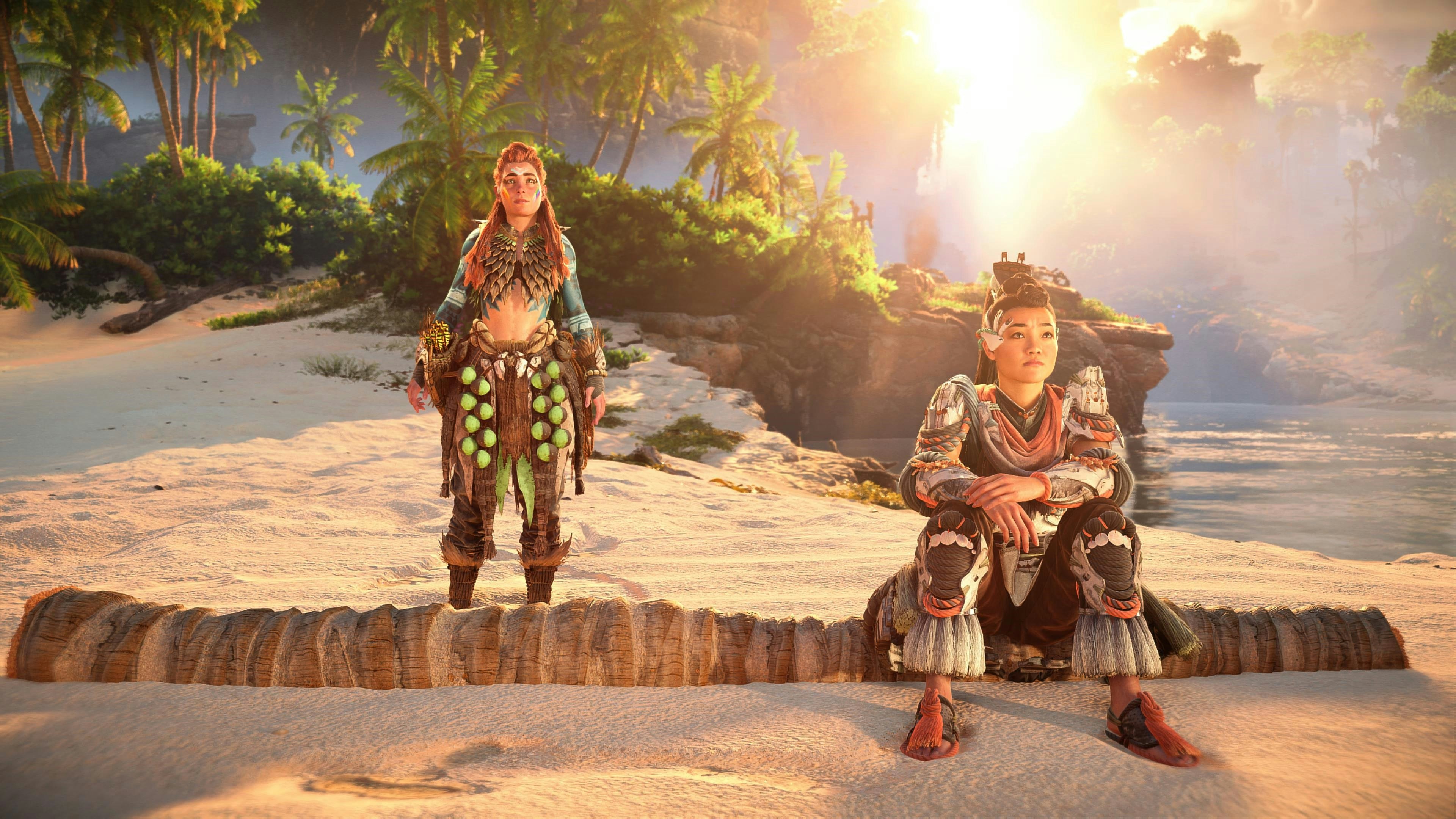
Ultimately, Horizon Forbidden West: Burning Shores feels like a good tease. It flirts with the concept of some biggest things yet in this story, but doesn’t quite commit to most of them in full. It’s always great getting to spend more time with Aloy, and while I wish a couple of things were explored further, it’s still a fun ride that hints at some of what is to come.
If some of the options for our heroine and the gameplay introduced here are both expanded on in the future, then I’m ecstatic for the next big adventure.
Horizon Forbidden West: Burning Shores released on April 19, 2023, and is currently available on PS5. Inverse reviewed the DLC on a PS5.
8/10
INVERSE VIDEO GAME REVIEW ETHOS: Every Inverse video game review answers two questions: Is this game worth your time? And, are you getting what you pay for? We have no tolerance for endless fetch quests, clunky mechanics, or bugs that dilute the experience. We care deeply about a game’s design, world-building, character arcs, and storytelling come together. Inverse will never punch down, but we aren’t afraid to punch up. We love magic and science-fiction in equal measure. And as much as we love experiencing rich stories and worlds through games, we won’t ignore the real-world context in which those games are made.







